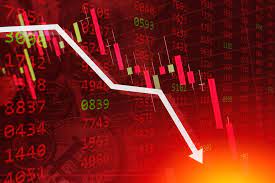- + Bullish
- Funds Grow Faster When you are Right
- Ability to Hedge
- Capture Momentum
- + Bearish
- Need to be Right on Timing and Direction
- Labor Intensive
- Higher Fees
Leveraged ETFs #SPXL #SPXS are a very versatile tool designed for traders and short term investors but before you place a single trade with that instrument you need to understand the mechanics of how they work. In this informative three part series Direxion funds demonstrates the advantages and the pitfalls of leveraged ETFs under three distinct scenarios.
Daily Rebalancing Magnifies Both Profits and Losses
One of the most non-intuitive aspects of Leveraged ETFs is to understand that they will not rise and fall on compound return. For example, imagine a market that rises 5% each day for three days straight. If you bought a 3X Long ETF at the start of day one, by day three your position should have gained 45%, right? Wrong. Your position will actually gain more than 45% (somewhere between 47%-48%) and the reason is that at the end of each day the ETF will increase its exposure to the market in order to maintain 3 to 1 ratio. As the market rises the ETF will leverage up more than the original 3X size because the Net Asset Value of its holdings is now worth more than the original 1 it started with on day one.
The daily rebalancing mandate of Leveraged ETFs essentially forces the fund to add more size as the value of the position rises. This works amazingly well in a rising market but it also exposes the investor to much bigger risk than at the beginning of the investment cycle.
5% Weekly Gain Leads to Doubling of Risk and Reward Via Leverage
In the stylized example shown in the video, after a week of 5% daily gains the investor’s leverage exposure is almost double (6X) versus the initial 3X exposure at the start of the week.
What if You are Dead Wrong?
The mechanics of daily rebalancing work in reverse as well , but with less harmful effect. If your Leveraged ETF position is going against you then the rules of daily rebalancing dictate that your exposure to the market will get smaller. As the net asset value of the fund shrinks the fund will need to use less leverage to maintain the same 3X ratio. So the net impact is that exposure declines the worse you do. This is essentially equivalent to reducing risk as you lose money.
60% Loss Becomes 75% Loss
Again in the stylized example of the video below Direxion assumes that you bet on a market rise and instead the market fell by 5% each day for five consecutive days. Using the cumulative return formula you should have lost 75% of your money (25%x3). But the actual loss is only 60% as the fund continuously reduces leverage to the market.
Whipsawed to Tears
Perhaps the single most frustrating aspect of Leveraged ETFs is the fact that they will lose money steadily even if the market goes nowhere. In the final stylized example of the video Direxion shows how up day, down day, up day cycle in the market that ends at the very same price that it started actually results in a 5% loss for the investor. The reason is that due to the daily rebalancing function the ETF winds up buying more at the top and selling more at the bottom churning the capital in the most unproductive and painful way.
Leveraged ETFs are an amazing innovation in the market allowing investors to experiment with a variety of strategies without the need to trade derivative instruments or even use margin in their stock account. But in order to utilize this asset investors need to understand the pros and the cons of the instrument

Buy (Invest)
Leveraged exposure to the market without the need for margin or derivative account
Investment grows faster than the cumulative compound return of the underlying when you are right
Ability to hedge profits in your portfolio if you expect a near term selloff
Ability to trade momentum in a specific sector on a leveraged basis
Sell (Don’t Invest)
Highly speculative – leading to very quick loss of capital is timing or direction is wrong
You must be correct on both direction and timing as flat, but whipsaw movement in underlying will eat away at capital
Requires intense daily management to keep exposure within planned limits
Fees are much higher ( around 100 basis points) than for plain vanilla ETF products








